Five years ago, an Indigenous girl named Tina Fontaine left a downtown Winnipeg hotel and never returned. She had been placed in the hotel—alone—by the Government of Manitoba’s Child and Family Services agency as a ward of the state.
Nine days later, her ravaged body—wrapped in a duvet and weighted down by 25 pounds of rocks—was dragged out of the city’s enigmatic Red River.
She was 15 years old.
No one has ever been convicted of the murder.
Child advocate report released
This week, the Manitoba Advocate for Children and Youth released her report on the agency’s investigation into Tina’s life and brutal death.
The report lists a litany of systemic failures while the young girl repeatedly confronted treacherous circumstances. Her life story reads like a screenplay that culminates in tragic predictability.
A broken home. Her father violently murdered. Suicidal behaviour. Substance abuse. Sexual exploitation.
Throughout all of this, she encountered institutions incapable—unwilling perhaps?—of mounting a response to a child clearly in crisis.
Her last days horribly encapsulate this failure. In the 12 hours before she was last seen, she was in contact with the police, the health care system, and the child welfare system.
In the end, none of these encounters prevented her from meeting the fate that far too many Indigenous women and girls have endured in this country.
A failed system
Naturally, none of this is new. Or unusual.
In a 2013 statement, the RCMP tallied 1,181 cases of missing or murdered Indigenous women and girls. There are more now.
More broadly, report after report has fastidiously laid out the deficiencies and outright delinquencies the Canadian state has overseen and perpetrated in its dealings with Indigenous peoples.
The Royal Commission on Aboriginal Peoples, penned a quarter century ago, called for sweeping changes.
And yet, nothing.
In seeming anticipation of the apparently inevitable, Manitoba’s child advocate and author of this week’s report, Daphne Penrose, stated that “children are going to die” if changes are not made.
She’s right, of course. In the five years since Tina’s death, they have died. And they will continue to do so.
This is an awful point to make. But it is undeniable.
And it should be a reckoning. A blight on our community—our country—that cannot be overstated.
A profoundly distorted society
There are a constellation of factors which tear at the social fabric, ultimately leading to women and girls of this land ending up in shallow graves.
It is the logical and predictable evolution of the colonization process and its pernicious effects. Which results in a profoundly distorted society.
The examples abound. For instance, Indigenous people—both men and women—are between six and seven times more likely to be murdered in their lifetime in Canada.
On over 80 per cent of reserves the median income falls below the poverty line, with 25 per cent securing income that does not approximate half of the poverty line cut-off. Six in 10 Indigenous children live in poverty.
And then there is the legacy of residential schools and the attempt to systematically destroy Indigeneity. The lasting impacts are as pervasive as they are devastating.
Category: CDNpoli
All Canadians have a role to play in ending MMIW ‘genocide,’ report says
Today the Murdered and Missing Indigenous Women And Girls report was released.
The inquiry’s final report, released publicly this morning with more than 200 recommendations to the federal government, calls violence against First Nations, Metis and Inuit women and girls a form of “genocide” and a crisis that has been “centuries in the making.”
“As the evidence demonstrates, human rights and Indigenous rights abuses and violations committed and condoned by the Canadian state represent genocide against Indigenous women, girls, and (LGBTQ and two-spirit) people,” it concludes.
And Canadian racists are arguing that it isn’t genocide.
Canada’s “Feminist” Prime Minister Justin Trudeau (Part Two)On…
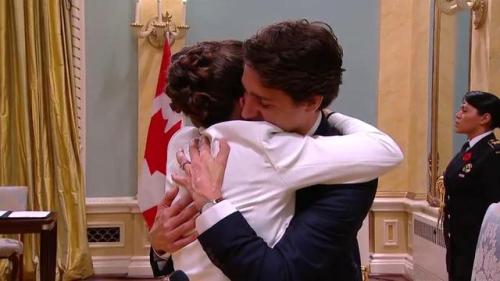
Kirsty Duncan
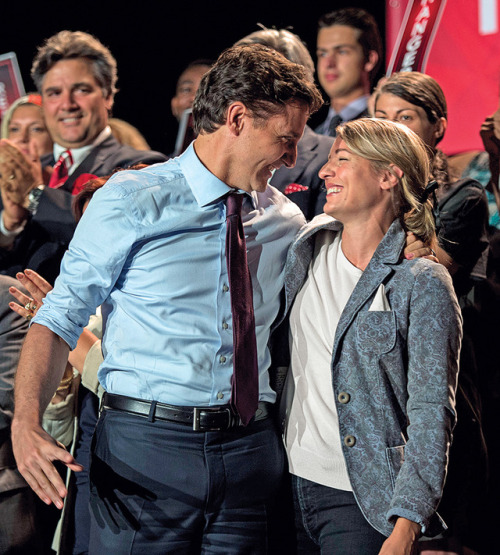
Mélanie Joly

Carla Qualtrough

Ginette C. Petitpas Taylor

Bernadette Jordan
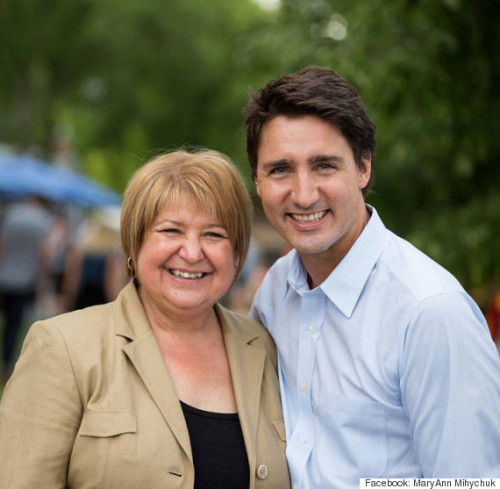
MaryAnn Mihychuk
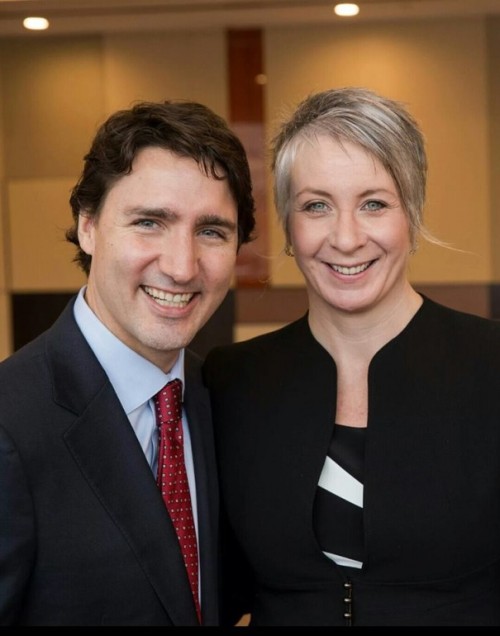
Patricia Hajdu

Filomena Tassi
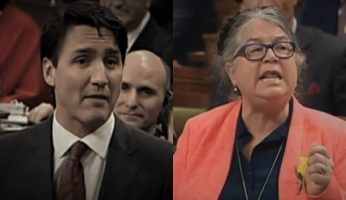
Diane Lebouthillier
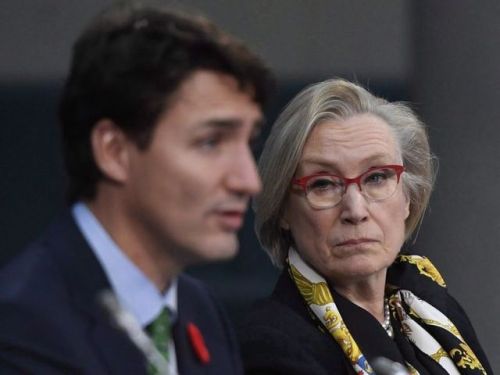
Carolyn Bennett
Canada’s “Feminist” Prime Minister Justin Trudeau (Part Two)
On the face of it, being in the Government’s Cabinet doesn’t just pay substantially better than being a Member of Parliament, it carries a great deal of power. After all, it is the PM & Cabinet who decide policy and law.
Cabinet Ministers can be fired for cause — they sit at the table where policy is made, and they’re are not allowed to disagree with Government policy, ever. Even if every member of the riding that elected them begs them to vote against a law the Government is putting through, even if the Minister agrees, to vote against such a law in Parliament would lose their Cabinet post.
Perhaps growing up in a big family has left me with stronger than usual aversion to having personal boundaries breached. I’ve chosen the photographs I have because I personally find most of them extremely creepy. These photographs show the Prime Minister getting right in people’s faces. In the nose to nose shots he’s gone way past personal distance as he gets right into people’s intimate space.
In all fairness there are a few photos like this where he gets disturbingly close to men as well, so I imagine this is just his style. Nonetheless, it is totally inappropriate in the workplace. No employer should use his unequal power and privilege to overstep the personal boundaries of women— or men— who are effectively his employees.
“The Prime Minister and the Ministers he or she chooses form the Cabinet. The Prime Minister also appoints Ministers of State to assist individual Cabinet Ministers. Persons appointed to the Cabinet are generally elected Members of Parliament, although it is customary for the Prime Minister to appoint at least one Senator to the Cabinet. Ministers serve “at the pleasure” of the Prime Minister, who may replace them or request their resignation at any time. The Prime Minister may also redefine ministerial portfolios and determine the size of the Cabinet as he or she sees fit.”
—Executive Branch of Government in Canada
Employment law protects most people from being fired on a whim, but like a medieval monarch, Prime Minister Trudeau has the unquestioned power to fire any Cabinet Minister at any time. For any reason. Or none.
15 of the 20 Cabinet female Cabinet Ministers are pictured in our Feminist PM’s embrace in these two posts.
What happens to the women in Cabinet who are made uncomfortable by the imposition of such physical intimacy in the workplace? Perhaps women MPs who mark their personal boundaries never make it into the Cabinet.
I don’t think my definition of feminism is the same as Mr Trudeau’s.
Prime Minister Justin Trudeau is pictured above with female Cabinet Ministers:
- Kirsty Duncan
Minister of Science
November 4, 2015–July 18, 2018
Minister of Sport and Persons with Disabilities
January 25, 2018–July 18, 2018
Minister of Science and Sport
July 18, 2018 – Present - Mélanie Joly
Minister of Canadian Heritage
November 4, 2015 – July 18, 2018
Minister of Tourism, Official Languages and La Francophonie
July 18, 2018 – Present - Carla Qualtrough
Minister of Sport and Persons with Disabilities
November 4, 2015–August 28, 2017
Minister of Public Services and Procurement and Accessibility[b]
August 28, 2017 – Present
Receiver General for Canada
August 28, 2017 – Present - Ginette C. Petitpas Taylor
Minister of Health
August 28, 2017 – Present - Bernadette Jordan
Minister of Rural Economic Development
January 14, 2019– - MaryAnn Mihychuk
Minister of Employment, Workforce and Labour
November 4, 2015–January 10, 2017 - Filomena Tassi
Minister of Seniors
July 18, 2018 – Present - Diane Lebouthillier
Minister of National Revenue
November 4, 2015 – Present - Carolyn Bennett
Minister of Crown-Indigenous Relations[a]
November 4, 2015 – Present
Find Part One here.
Canada’s “Feminist” Prime Minister Justin Trudeau (Part One)Even…
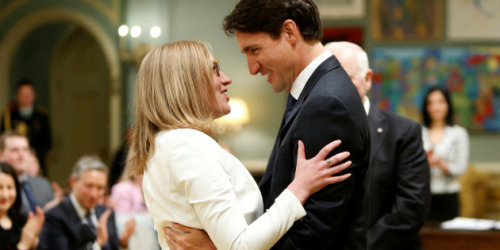
Karina Gould

Marie-Claude Bibeau
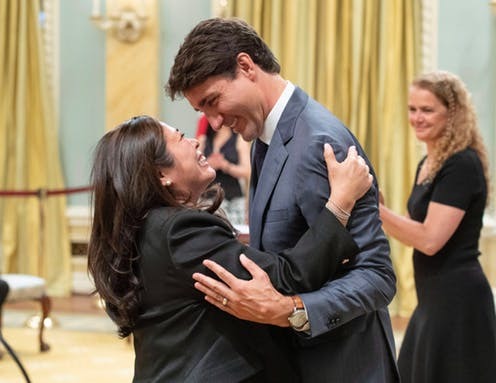
Mary Ng
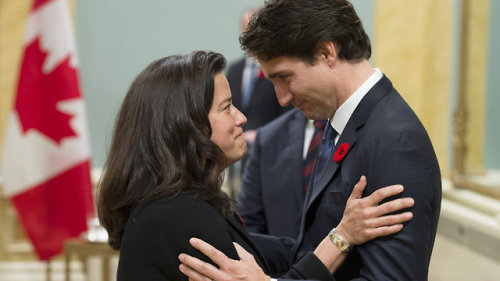
Jody Wilson-Raybould

Catherine McKenna

Chrystia Freeland
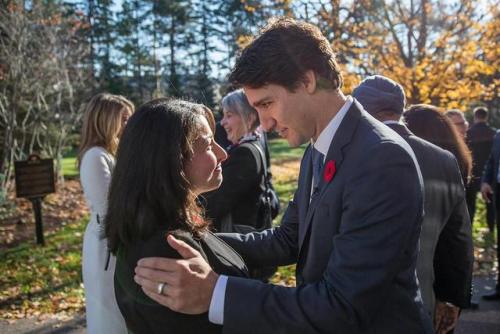
Maryam Monsef
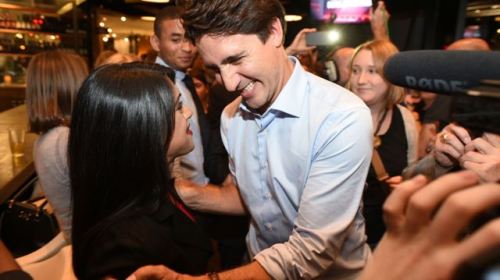
Bardish Chagger
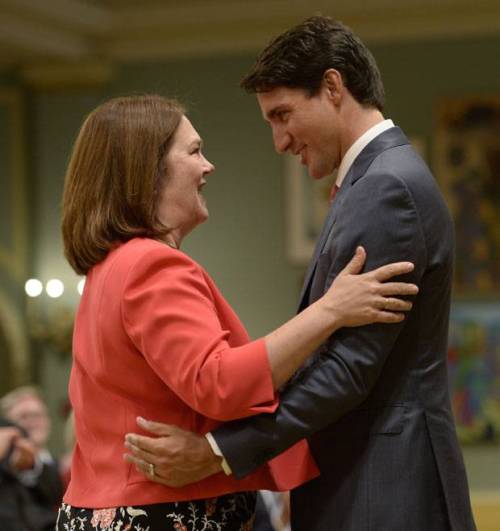
Jane Philpott

Judy Foote
Canada’s “Feminist” Prime Minister Justin Trudeau (Part One)
Even though the Liberal MPs elected weren’t anywhere close to gender parity in Parliament in 2015, about a quarter of LPC MPs being women, there was a big todo made about Mr Trudeau’s choice of a cabinet that was half male & half female.
The Prime Minister has gotten a lot of ink about his gender parity cabinet, and his insistence that he is a feminist.
Prime Minister Justin Trudeau is pictured above with female Cabinet Ministers:
- The Honourable Karina Gould,
Minister of Democratic Institutions
January 10, 2017 – Present - The Honourable Marie-Claude Bibeau
Minister of International Development
November 4, 2015 – Present - The Honourable Mary F.Y. Ng
Minister of Small Business and Export Promotion
July 18, 2018 – Present - The Honourable Jody Wilson-Raybould
Minister of Justice and Attorney General of Canada
Nov 4, 2015 – Jan 14, 2019
Minister of Veterans Affairs
January 14, 2019 – Present
Associate Minister of National Defence
January 14, 2019 – Present - The Honourable Catherine McKenna
Minister of Environment and Climate Change
November 4, 2015 – Present - The Honourable Chrystia Freeland
Minister of Foreign Affairs
January 10, 2017 – Present - The Honourable Maryam Monsef
Minister of Democratic Institutions
November 4, 2015 – January 10, 2017
Minister of Status of Women
January 10, 2017 – Present - The Honourable Bardish Chagger
Minister of Small Business and Tourism
November 4, 2015–July 18, 2018
Leader of the Government in the House of Commons
August 19, 2016 – Present - The Honourable Jane Philpott
Minister of Health
November 4, 2015 – August 28, 2017
Minister of Indigenous Services
August 28, 2017 – January 14, 2019
President of the Treasury Board
January 2019 – Present - The Honourable Judy Foote
Receiver General for Canada
November 4, 2015 – August 24, 2017
Minister of Public Services and Procurement and Accessibility[b]
November 4, 2015 – August 24, 2017
Canada’s “Feminist” Prime Minister Justin Trudeau (Part One)Even…

Karina Gould

Marie-Claude Bibeau

Mary Ng

Jody Wilson-Raybould

Catherine McKenna

Chrystia Freeland

Maryam Monsef

Bardish Chagger

Jane Philpott

Judy Foote
Canada’s “Feminist” Prime Minister Justin Trudeau (Part One)
Even though the Liberal MPs elected weren’t anywhere close to gender parity in Parliament in 2015, about a quarter of LPC MPs being women, there was a big todo made about Mr Trudeau’s choice of a cabinet that was half male & half female.
The Prime Minister has gotten a lot of ink about his gender parity cabinet, and his insistence that he is a feminist.
Prime Minister Justin Trudeau is pictured above with female Cabinet Ministers:
- The Honourable Karina Gould,
Minister of Democratic Institutions
January 10, 2017 – Present - The Honourable Marie-Claude Bibeau
Minister of International Development
November 4, 2015 – Present - The Honourable Mary F.Y. Ng
Minister of Small Business and Export Promotion
July 18, 2018 – Present - The Honourable Jody Wilson-Raybould
Minister of Justice and Attorney General of Canada
Nov 4, 2015 – Jan 14, 2019
Minister of Veterans Affairs
January 14, 2019 – Present
Associate Minister of National Defence
January 14, 2019 – Present - The Honourable Catherine McKenna
Minister of Environment and Climate Change
November 4, 2015 – Present - The Honourable Chrystia Freeland
Minister of Foreign Affairs
January 10, 2017 – Present - The Honourable Maryam Monsef
Minister of Democratic Institutions
November 4, 2015 – January 10, 2017
Minister of Status of Women
January 10, 2017 – Present - The Honourable Bardish Chagger
Minister of Small Business and Tourism
November 4, 2015–July 18, 2018
Leader of the Government in the House of Commons
August 19, 2016 – Present - The Honourable Jane Philpott
Minister of Health
November 4, 2015 – August 28, 2017
Minister of Indigenous Services
August 28, 2017 – January 14, 2019
President of the Treasury Board
January 2019 – Present - The Honourable Judy Foote
Receiver General for Canada
November 4, 2015 – August 24, 2017
Minister of Public Services and Procurement and Accessibility[b]
November 4, 2015 – August 24, 2017
gameraboy1: Mad Max: Fury Road (2015) If our governments…





Mad Max: Fury Road (2015)
If our governments continue to build new pipelines and incentivize increased fossil fuel expansion, this is the nicest Climate Change future we can expect.
Abdoul Abdi supporters push for Nova Scotia to intervene in deportation case
Family and friends of a Somali refugee who came to Nova Scotia as a child 17 years ago were at Province House Tuesday morning trying to get the Nova Scotia government to intervene in his deportation case.
Abdoul Abdi, 23, will be in Toronto on Wednesday for an Immigration and Review Board hearing where he could be ordered deported from Canada.
“I think it’s unfair that they’re trying to strip him of his permanent resident’s card and that he can’t have health care or work, even now that he has a job,” said his sister Fatuma Abdi.. “He’s trying to better himself but the government is moving him 10 steps back.”
Canada’s record on refugees isn’t all its cracked up to be.
Collapse of U.K. construction giant Carillion puts 6,000 Canadian jobs on line
Privatization: the gift that just keeps giving
Carillion purveyed billions from public sector contracts into private profits, dividends & executive bonuses. Now its failure is leaving that mess for the public sector to clean up, along with the wages and pensions of its 43,000 workers, along with 6,000 in Canada.
Defenders of the status quo argue that Proportional…

Defenders of the status quo argue that Proportional Representation leads to back room deals.
Proportional Representation
And it is indeed true that Proportional Representation forces political parties to compromise and work together in order to govern.
But those aren’t back room deals. Voters know it is going on and can see the results and understand why they happen.
If your party sells out its core values, you can express your displeasure by electing a different candidate who might actually represent you in the next election.
First Past The Post
The back room deals that are democratically worrisome are the ones that happen within big tent parties. Big tent parties are based on elaborate back room deals. Parties that used to have a recognizable ideology – something they actually stand for – merge with other parties, not because of shared valued, but because it is necessary if your party is going to be able to gain power.
The goings on in these back rooms are so mysterious and secretive that even MPs and party members don’t know which promises their party will even try to keep if they win an election. Such things are decided in back rooms.
Once in a while we can see how it really works.
Following the BRexit vote, the new UK PM Theresa May called a snap election intending to build stronger support for a “hard” BRexit, but in fact lost support resulting in a snap election. The deal she made with the extremist DUP to keep power horrified many Brits.
When no party won a majority in the recent British Columbia Election, then Premier Christy Clark was willing to throw everything her party stood for under the bus in order to retain power. Luckily the other BC Parties were able to reach a compromise.
These are the backroom deals we can all do without.
Canadian Cannabis CrackdownBecause cannabis was illegal before…

Canadian Cannabis Crackdown
Because cannabis was illegal before any sort of scientific testing was done, there has been precious little modern scientific study of the substance. What little study there has been suggests negative effects of cannabis are less harmful than many other substances that can be purchased openly and legally by anyone. Like aspirin. People can kill themselves with aspirin. But it is physically impossible for anyone to kill themselves with cannabis.
The worst health risks with cannabis centre around the fact that it is most often smoked in combination with tobacco, and we now know tobacco is hazardous to our health. And yet the Canadian Government only allowed patients access to edibles after another Supreme Court challenge.
“We believe, however, that the continued prohibition of cannabis jeopardizes the health and well-being of Canadians much more than does the substance itself or the regulated marketing of the substance. In addition, we believe that the continued criminalization of cannabis undermines the fundamental values set out in the Canadian Charter of Rights and Freedoms and confirmed in the history of a country based on diversity and tolerance.”
— Senate Special Committee on Illegal Drugs (2002)
REPORT OF THE SENATE SPECIAL COMMITTEE ON ILLEGAL DRUGS
And yet the Canadian Government promising cannabis legalization has increased it’s war on cannabis even more. They are cracking down on cannabis at a frantic pace in the lead up to legalization.
The loudest and most effective cannabis activists in Canadian history are Marc and Jodie Emery. Today, they accepted probation and hefty fines in a plea deal to allow 17 others to walk free.
This makes no sense. Or does it?
Credits
Jodie Emery quotation from “Cannabis Culture dispensaries: What I did, and why” by Jodie Emery; Photograph by Cannabis Culture editor Jeremiah Vandermeer, released under a Creative Commons Attribution 2.0 License.